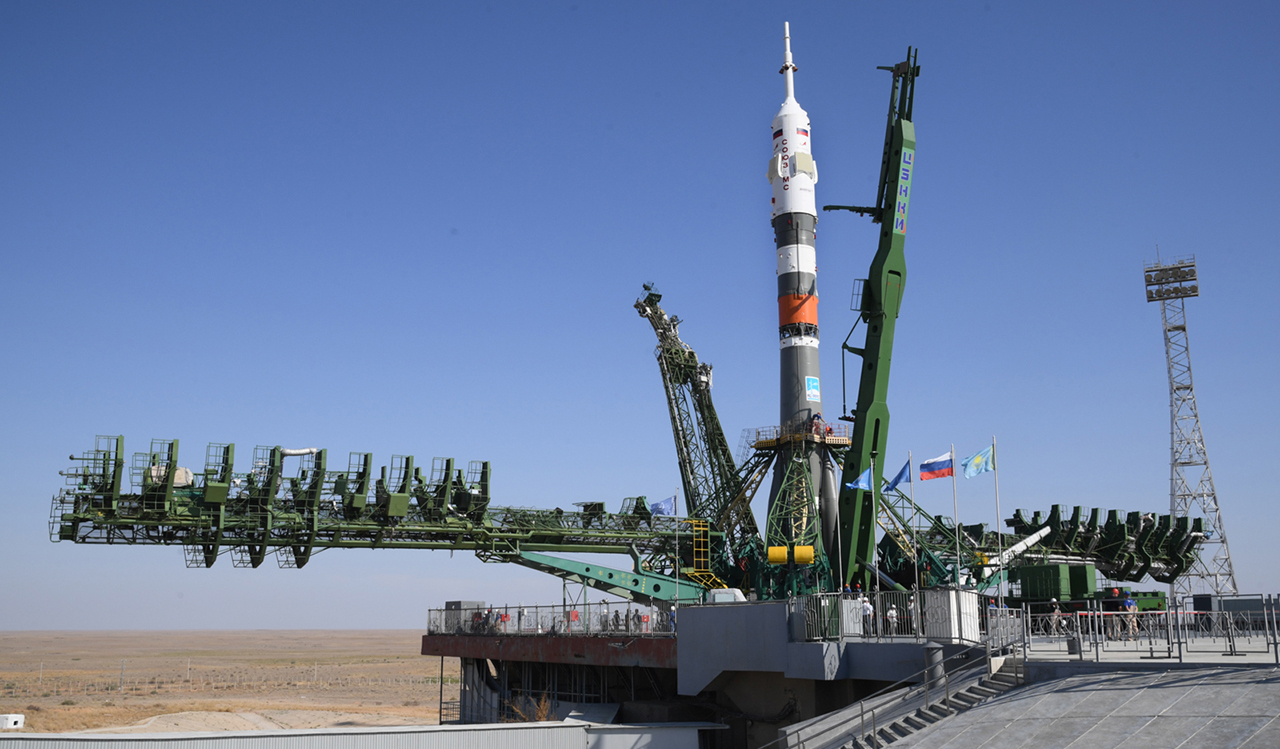 Kazakistan. The Soyuz MS14 spacecraft, which was launched on 22 August from the Baikonur Cosmodrome, reached the International Space Station (ISS) on 24 August. On board the craft was the Mini-EUSO (Multiwavelength Imaging New Instrument for the Extreme Universe Space Observatory) ultraviolet telescope. The telescope is the product of an agreement between the Italian Space Agency (ASI), the financing body, and the Russian Space Agency Roscosmos, and was developed by an international collaboration led by INFN, with the contribution of the Ministry of Foreign Affairs and International Cooperation (MAECI). Mini-EUSO, which will be activated in the next few months by the astronaut Luca Parmitano, will observe the Earth from Russia's Zvezda module of the ISS. It will be pointed towards the Earth to record ultraviolet emissions of cosmic, atmospheric, and terrestrial origins, thanks to the optical system and to the new generation focal plane, which allow the telescope to reach an unprecedented level of sensitivity. The main scientific objectives of Mini-EUSO include: the first mapping of the Earth’s nocturnal ultraviolet emissions and of their variations - whether anthropic or bioluminescent, i.e. linked to particular behaviours of plankton and algae; the study of the upper atmosphere; and the study of signals produced when meteors impact the atmosphere. Mini-EUSO is, moreover, capable of observing ultra-high-energy cosmic rays, particles the origins of which are still being debated and which, it is presumed, come from other galaxies.
Kazakistan. The Soyuz MS14 spacecraft, which was launched on 22 August from the Baikonur Cosmodrome, reached the International Space Station (ISS) on 24 August. On board the craft was the Mini-EUSO (Multiwavelength Imaging New Instrument for the Extreme Universe Space Observatory) ultraviolet telescope. The telescope is the product of an agreement between the Italian Space Agency (ASI), the financing body, and the Russian Space Agency Roscosmos, and was developed by an international collaboration led by INFN, with the contribution of the Ministry of Foreign Affairs and International Cooperation (MAECI). Mini-EUSO, which will be activated in the next few months by the astronaut Luca Parmitano, will observe the Earth from Russia's Zvezda module of the ISS. It will be pointed towards the Earth to record ultraviolet emissions of cosmic, atmospheric, and terrestrial origins, thanks to the optical system and to the new generation focal plane, which allow the telescope to reach an unprecedented level of sensitivity. The main scientific objectives of Mini-EUSO include: the first mapping of the Earth’s nocturnal ultraviolet emissions and of their variations - whether anthropic or bioluminescent, i.e. linked to particular behaviours of plankton and algae; the study of the upper atmosphere; and the study of signals produced when meteors impact the atmosphere. Mini-EUSO is, moreover, capable of observing ultra-high-energy cosmic rays, particles the origins of which are still being debated and which, it is presumed, come from other galaxies.






